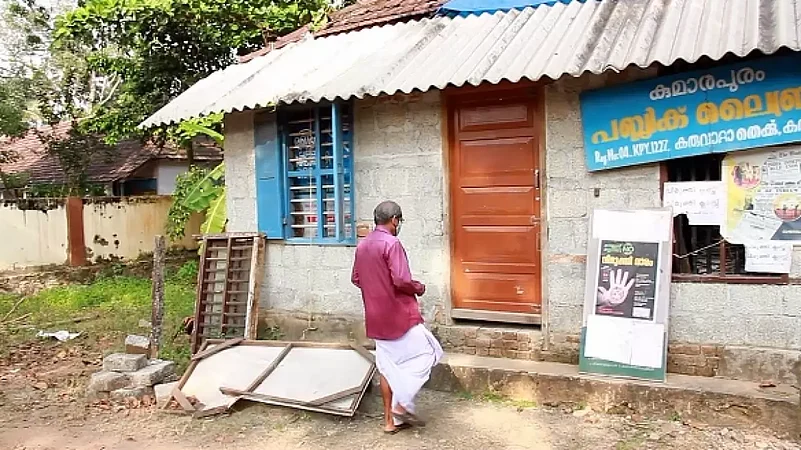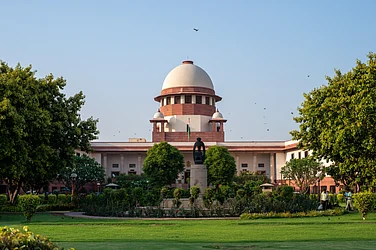Mayyil Panchayat in Kannur district, Kerala, has 34 libraries, with a minimum of one library in each ward. Mayyil has also acquired the status of the first panchayat in India that has been completely digitised. The 34 libraries have been digitally connected and one can get the complete information of the 209,404 books in just one click. The formal declaration of the completion of the digitisation of the libraries was announced by the Chief Minister in September 2020.
Kerala holds the distinction of being the state with the highest number of libraries and also the most densely populated. As per the records of the Kerala Library Council, the state hosts a staggering number of over 10,000 libraries, in addition to those affiliated with educational institutions. In Kerala, the concept of a library transcends mere reading; it evolves into a dynamic nucleus where the rich fabric of cultural diversity is intricately interwoven. Beyond fostering a passion for literature, a village library in Kerala frequently morphs into a vibrant platform for cultural interactions, showcasing exhibitions, hosting film festivals and various performances.
The Union Government’s move to bring Libraries into the Concurrent List has caused worry in the state. The government and the Left parties believe that this is nothing short of a takeover bid to control the libraries, and thus to intrude into the cultural space of Kerala.
“Kerala has an affluent history of library movement. The panchayat level libraries have played a phenomenal role in building a secular public space in Kerala. Now the Sangh Parivar wants to capture this space, but it is not going to happen,” says V Sivadasan, CPI(M) leader and a member of the Rajya Sabha. The Kerala Government has expressed displeasure over the Union government’s move to curtail the state’s control over libraries. Dr R Bindu, the Higher Education Minister, expressed her concern during the National Library Festival held in New Delhi in the first week of August.
The public library movement in Kerala boasts of an age that predates that of any other state in India, standing as a unique phenomenon in numerous aspects. The historical regions of Travancore, Cochin and Malabar, which together form the present-day Kerala state, each witnessed the evolution of public library development during distinct timeframes.
Here’s a glance into the history: The Thiruvananthapuram Public Library was established in 1829, during the tenure of Swathi Thirunal,
the Maharaja of the Kingdom of Travancore, seven years before the Calcutta National Library had been launched (1836). On September 14, 1945, a meeting of 47 delegates, representing different libraries across Travancore, was held under the leadership of P N Panicker, who is known as the father of the library movement in Kerala. The conference convened in Ambalappuzha (present-day Alappuzha district), was inaugurated by C P Ramaswamy Iyer, the diwan of Travancore. The reading culture of the state had been nurtured by the governments even before the formation of the state, which helped in building a strong foundation of the library movement. In the historical realm of the princely state of Cochin, the library movement gained prominence during the emergence of the nationalist movement, despite the existence of the Ernakulam Public Library from an earlier period. Meanwhile, in British Malabar, the northern part of Kerala, the library movement intertwined intricately with the nationalist movement as well as Left-leaning and other progressive movements.
Kerala’s glory as the most literate state has also been intrinsically connected with the library movement in the state. The libraries in Kerala have been hosting night classes for illiterates since 1937.
The 1937 conference held in Calicut, which drew the participation of 300 delegates, marks a significant milestone in the annals of Kerala's library movement. This seminal event led to the creation of an organisation known as Akhila Malabar Library Sangham, which subsequently expanded its reach to encompass the entire state. Eventually, in 1958, it was formally registered as the Kerala Grandhasala Sangham. In 1975, the Kerala Grandhasala Sangham was selected for the Krupskaya Award for its outstanding contribution in the field of literacy and adult education. (The ‘Krupskaya Literacy Prize’ was named after the Russian politician of the Soviet era, Nadezhda K. Krupskaya. The prize was sponsored by the government of the Soviet Union).
Following the enactment of the Public Library Act in 1989, the Kerala Library Council was instituted in 1994. Every library within the state is mandated to obtain registration with this council. “The establishment of a library requires a minimum of 1,000 books,” says V K Madhu, the secretary of the State Library Council, adding that the library should operate for at least a year before applying for registration. Disputing the prevalent notion that “books are becoming obsolete,” he emphasises that the number of libraries in Kerala is on an upward trajectory. Notably, the panchayats have accorded priority to the establishment of libraries, which function as the secular and cultural nucleus of villages. Madhu observes that the allure of the “library culture” has not been entirely overshadowed by smartphones, with young people rekindling their interest in libraries.





















